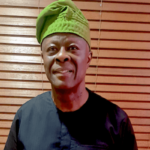Last week was May 1st and the drums were out to celebrate workers in most parts of the world. The column deserves to be identified with workers but could not do this piece because of the situation we are in now. But as promised, this is a belated Workers Day Celebration Piece. Enjoy it!
Globally, the official name for Workers’ Day is International Workers’ Day and it is celebrated in most countries on May 1st. It is also called May Day, Labour Day and majorly celebrated all over the world in the month of May. Indeed, with most countries, Workers Day is a public holiday. However, some countries celebrate on other dates they find suitable; such as the United States of America and Canada, that celebrate Labour Day, on the first Monday of every September. In Australia, Labour Day is celebrated on certain Mondays in the months of March, May and or October, depending on the part of Australia! Other countries which celebrate Labour Day on dates different from May 1st includes Jamaica, Kazakhstan, United Kingdom, New Zealand, Trinidad and Tobago, Bangladesh and The Bahamas. In Saudi Arabia and Qatar, International Workers Day is not celebrated as a public holiday. During the Cold War period, the world was divided along the line of two ideologies; Communist East and Capitalist West with a few countries that decided to be none aligned to any of the two ideologies.
At origin, May Day was born out of the struggle for workers to enjoy better working hours (8 – hour workday) and conditions, by embarking on a strike on May 1. This led to a protest on May 4, 1886, at Haymarket Square, Chicago, US, by a Labour Union Movement, advocating for a maximum of eight hours of work per day, elimination of child labour and abuses from employers. The protest resulted in the deaths of some of the protesters and policemen dispersing them. Although the Union’s objective to regulate the number of working day hours was not achieved until the late 1880s, the protest still remains a significant reference point in the history of Workers Day, as we know it today. Thus, in 1889, the International Workers’ Congress in Paris declared May 1st an eight hour holiday. The International Labour Organisation supervises and manages the affairs of labour issues worldwide.
In Nigeria, labour system is rich in history. From the period of the nation’s colonization where the colonial masters took advantage of the cheap labour to the time of independence, workers in Nigeria have toiled long and hard to fulfil the dream of their forefathers. Therefore, the International Workers’ Day, held on 1st May (in over 140 nations) is an avenue to celebrate the working class for their commitment, service, selflessness, loyalty, and sacrifice.
This year’s event is coming at a time when labour is facing enormous challenges. Salaries are not coming, health challenges at workplaces, productivity and a paradigm shift in the way and manner we work. Remote working, compressed work hours and reduced workforce are now in vogue. Worst still the most derided action by employers of labour would be rolled out in the next few months worldwide i.e staff rationalisation and terminations due to business failures.
In Nigeria, the first Workers’ Day holiday was declared in 1980 by the government of the People’s Redemption Party in Kano and eventually became a national holiday on 1st of May, 1981.
All through history in Nigeria, Labour Unions and their members have used the avenue to highlight the challenges of labour, the somewhat diminished significance of the working class all over the country and an action call for improved welfare for its members. Government, as a major employer of labour, seizes the opportunity of the holiday to make promises on ways to improve the working conditions of employees. In this regard, the Federal Government recently approved the increase of minimum wage to Thirty Thousand Naira, from Eighteen Thousand Naira. Ultimately, while there are demands and promises made on each Workers’ Day in Nigeria, it is not all doom and gloom, as workers, from across the country, commemorate the day through celebrations across all the states of the federation. The history of the labour movement cannot be complete without the mention of people like Late Pa Michael Imodu, Mallam Ciroma, Alhaji Hassan Sunmonu, Mr. Pascal Bafyau and Mr. Adams Oshiomole to mention but a few. They did play their parts in the fight for welfare of workers over the years.
On the issue of the celebrations, May Day is characterised by speeches, decorative posters, parades, and various march past events. However, in some rare cases, May Day is also marked with workers’ demonstrations to display their plight or displeasures. This is common in most parts of the world but it is more prevalent in the former communist countries.
In China, the Labour Holiday used to be a seven day holiday, but was reduced to three days in 2008. Beyond the official speeches by Party Officials, the citizens visit memorable sights and embark on a shopping spree this period. For 2020, China has announced the extension of The Labour Day Holidays to five days (1st – 5th May).
In Europe, the May Day Celebration i.e May 1st coincides with an ancient Festival of Spring, which is a traditional holiday in many parts of Europe, featuring Cakes, Singing and Dancing. However, the Labour Day variant is celebrated widely across Europe with huge citizens turn out at public places, horse parades and speeches by government officials. However, quite a number of European countries do not celebrate the Workers Day on May 1st just so as to differ from the communist style and date.
The US celebrates its Labour Day on 1st Monday in September, amidst funfair, Street parades, and Sporting events. However, research has shown that various demonstrations, protests and rallies have been organized over the years in the US on May 1 regarding undocumented immigrant workers and continuation of Iraq War veterans, to mention but a few issues being addressed during the annual event.
Bright-coloured uniforms, march past, parades, singing, and dancing are characteristics of May Day celebration in Nigeria. Decorative banners and posters with encouraging words on the significance of workers to the development of the Country are also parts and parcel of the days’ events. The Workers’ Day is attended by most workers, professionals, students, market men and women, government officials, as well as members of Civil Society Organizations.
COVID – 19 pandemic ravaging the world, and the subsequent need to maintain social distance as a means to limit the spread of the viral infection, may cause this year’s May Day will likely be on a much smaller scale. Nevertheless, while there are still hurdles to cross by workers in Nigeria, the achievement made over the years are worth remembering and celebrating.
Moreover, this year’s celebration is taking place at a trying period. Most workers are at home due to the lockdown. To worsen the situation, most employers of labour are announcing drastic cut in pay to workers while others are also contemplating retrenchment. Indeed workers are in a dilemma and facing uncertain future worldwide.
In conclusion, working class citizens are the epicentre of May Day celebration. Their contributions towards a united and developed Nigeria are what make the commemoration of Worker’s Day one of the most important holidays in the country. Hence, May Day celebration as a national holiday is to honour the unsung heroes whose sacrifices sometimes go unnoticed. We salute the courage, resilience and tenacity of purpose of the Nigerian Worker. Long Live the Labour Movement, Long Live Nigeria! Aluta Continua.
“Recite: In the name of thy Lord who created man from a clot. Recite: And thy Lord is the Most Generous Who taught by the pen, taught man that which he knew not.”
Give me wisdom and knowledge, that I may lead this people, for who is able to govern this great people of yours?”
 Join Daily Trust WhatsApp Community For Quick Access To News and Happenings Around You.
Join Daily Trust WhatsApp Community For Quick Access To News and Happenings Around You.


